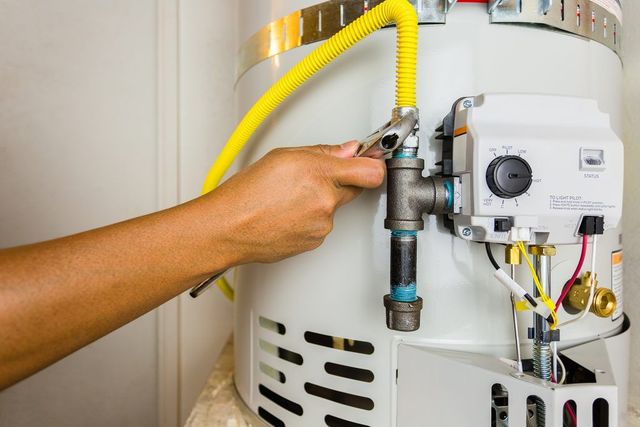Essential Guidance on Caring for Your Home's Hot Water SystemSpecialist Guidance for Caring for Your Home's Hot Water System
Essential Guidance on Caring for Your Home's Hot Water SystemSpecialist Guidance for Caring for Your Home's Hot Water System
Blog Article
We have come across this post involving What Kind of Maintenance Do Water Heaters Need? down the page on the web and think it made good sense to discuss it with you here.

Warm water is essential for everyday convenience, whether it's for a refreshing shower or cleaning recipes. To ensure your warm water system runs effectively and lasts longer, normal maintenance is essential. This write-up offers sensible tips and insights on just how to maintain your home's hot water system to prevent disturbances and pricey repairs.
Introduction
Preserving your home's warm water system might seem overwhelming, but with a few easy actions, you can guarantee it operates smoothly for several years ahead. This overview covers everything from comprehending your hot water system to DIY maintenance ideas and recognizing when to call in specialist aid.
Importance of Maintaining Your Hot Water System
Normal maintenance not just extends the lifespan of your warm water system but also guarantees it runs successfully. Neglecting upkeep can lead to decreased efficiency, greater power bills, and even premature failing of the system.
Signs Your Hot Water System Needs Maintenance
Recognizing when your warm water system requires interest can stop significant problems. Watch out for indications such as irregular water temperature, weird sounds from the heating unit, or rusty water.
Understanding Your Hot Water System
Before diving into maintenance tasks, it's practical to comprehend the fundamental components of your warm water system. Normally, this includes the water heater itself, pipelines, anode poles, and temperature controls.
Monthly Maintenance Tasks
Normal month-to-month checks can aid capture minor issues prior to they rise.
Purging the Hot Water Heater
Purging your hot water heater eliminates sediment buildup, boosting performance and extending its life.
Monitoring and Changing Anode Rods
Anode poles avoid corrosion inside the storage tank. Examining and changing them when broken is vital.
Examining and Readjusting Temperature Settings
Adjusting the temperature setups guarantees optimum performance and safety.
Do It Yourself Tips for Maintenance
You can execute numerous upkeep tasks on your own to keep your hot water system in leading condition.
Looking for Leaks
Frequently evaluate pipes and links for leakages, as these can cause water damage and higher expenses.
Testing Stress Relief Valves
Testing the pressure safety valve ensures it operates properly and prevents extreme pressure accumulation.
Insulating Pipelines
Protecting hot water pipes reduces heat loss and can conserve energy.
When to Call a Professional
While do it yourself upkeep is advantageous, some issues need professional expertise.
Complicated Concerns Needing Specialist Assistance
Instances include significant leaks, electric problems, or if your hot water heater is regularly underperforming.
Regular Professional Maintenance Perks
Professional upkeep can include complete evaluations, tune-ups, and making certain compliance with safety criteria.
Conclusion
Routine maintenance of your home's hot water system is essential for effectiveness, long life, and price savings. By complying with these tips and recognizing when to look for professional assistance, you can make certain a reputable supply of warm water without unanticipated disruptions.
How to Maintain an Instant Hot Water Heater
Before tinkering with your hot water heater, make sure that it’s not powered on. You also have to turn off the main circuit breaker and shut off the main gas line to prevent accidents. Also turn off the water valves connected to your unit to prevent water from flowing into and out of the appliance. 2. When you’re done, you have to detach the purge valves’ caps. These look like the letter “T” and are situated on either side of the water valves. Doing so will release any pressure that has accumulated inside the valves while at the same time avoid hot water from shooting out and burning your skin. 3. When the purge valves’ caps are removed, you have to connect your hosing lines to the valves. Your unit should have come with three hoses but if it didn’t, you can purchase these things from any hardware or home repair shops. You can also get them from retail stores that sell water heating systems. Read the user’s manual and follow it to complete this task properly. When the hosing lines are connected, open the purge port’s valves. 4. You should never use harsh chemical cleaners or solutions when cleaning your unit. Make use of white vinegar instead. It should be undiluted and you’ll probably use about 2 gallons. 5. Now flush your water heater. This task should probably take about 40 minutes. We can’t give you specific directions for this because the procedure is carried out depending on the type, model and brand of your heater. With that being said, refer to the user’s manual. 6. When you’re done draining the unit, you have to turn off the purge port valves again. Remove the hosing lines that you earlier installed on each of the water valves. Put the valve caps (purge port) back in their respective places and be very careful so as not to damage the rubber discs that are found inside these caps. 7. Now that everything’s back in place, check your user’s manual again to find out how to reactivate your water heating system. 8. Once it is working, turn one of your hot water faucets on just to let air pass through the heater’s water supply pipes. Leave the tap on until water flows smoothly out of it. https://www.orrplumbing.com/blog/2014/september/how-to-maintain-an-instant-hot-water-heater/

I stumbled upon that entry about Tips on Maintaining a Water Heater when doing a lookup on the search engines. Sharing is caring. You won't know, you could be doing someone a favor. I am grateful for your time. Revisit us soon.
Call Today Report this page